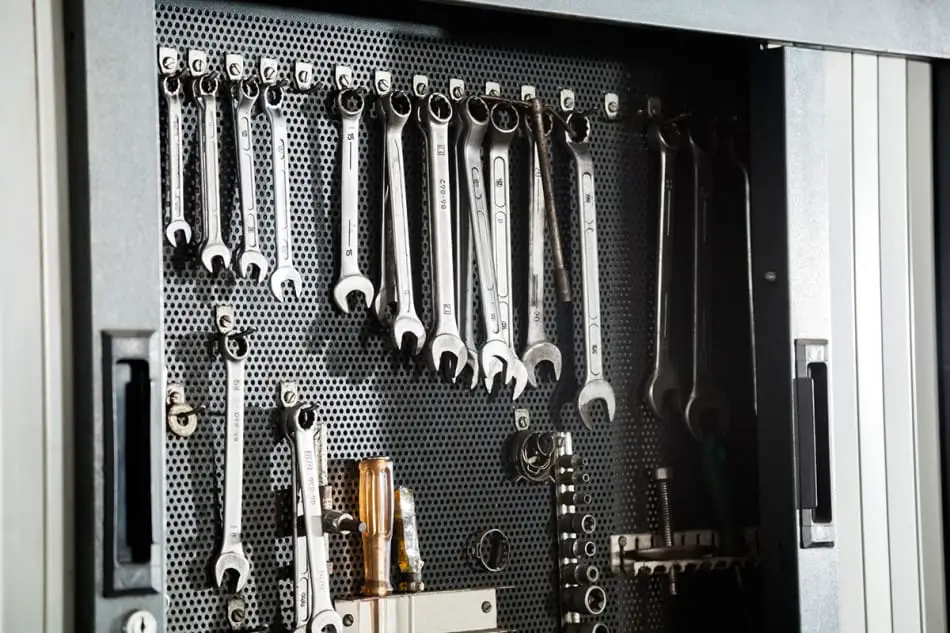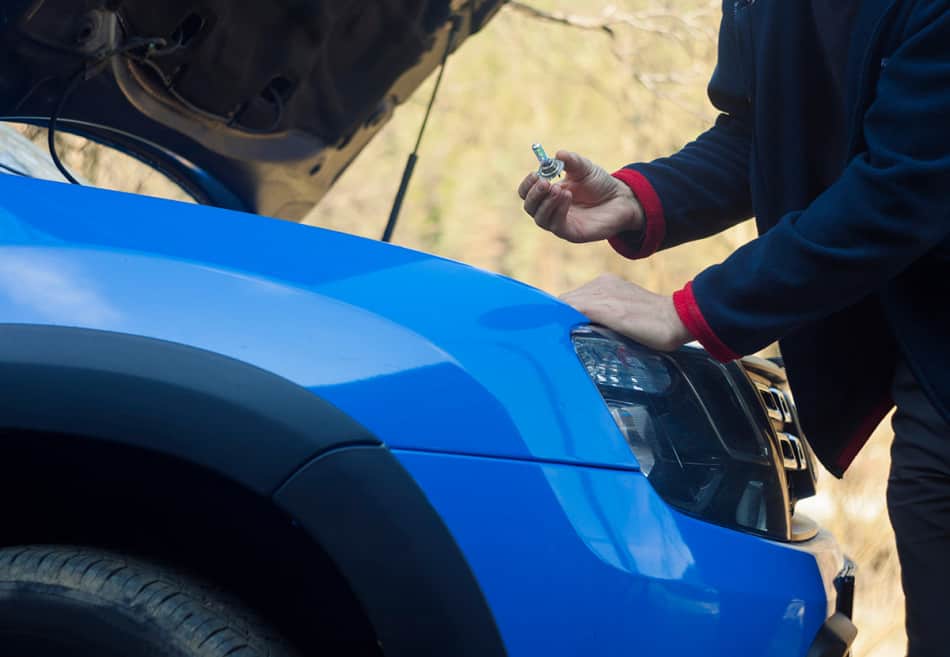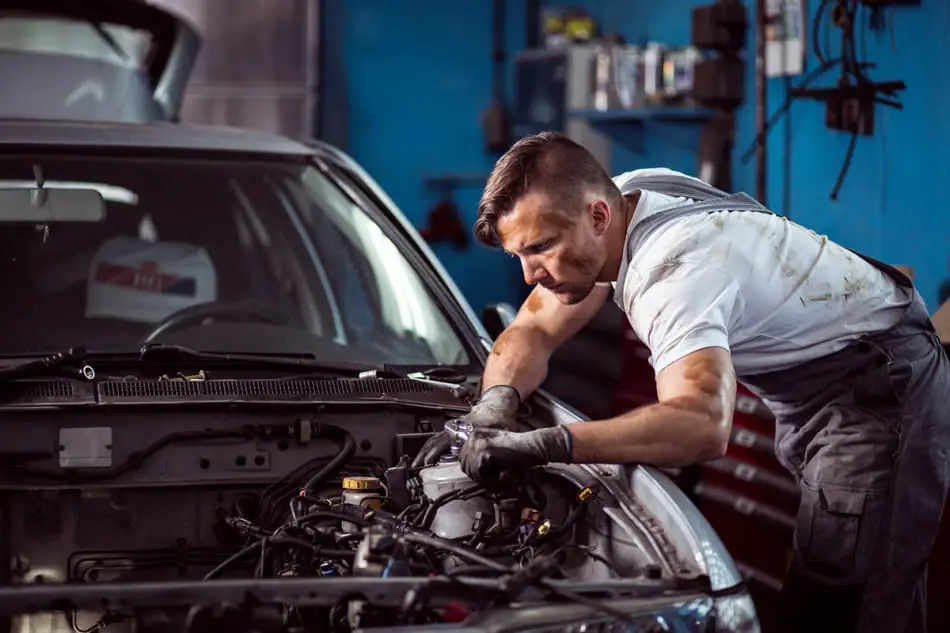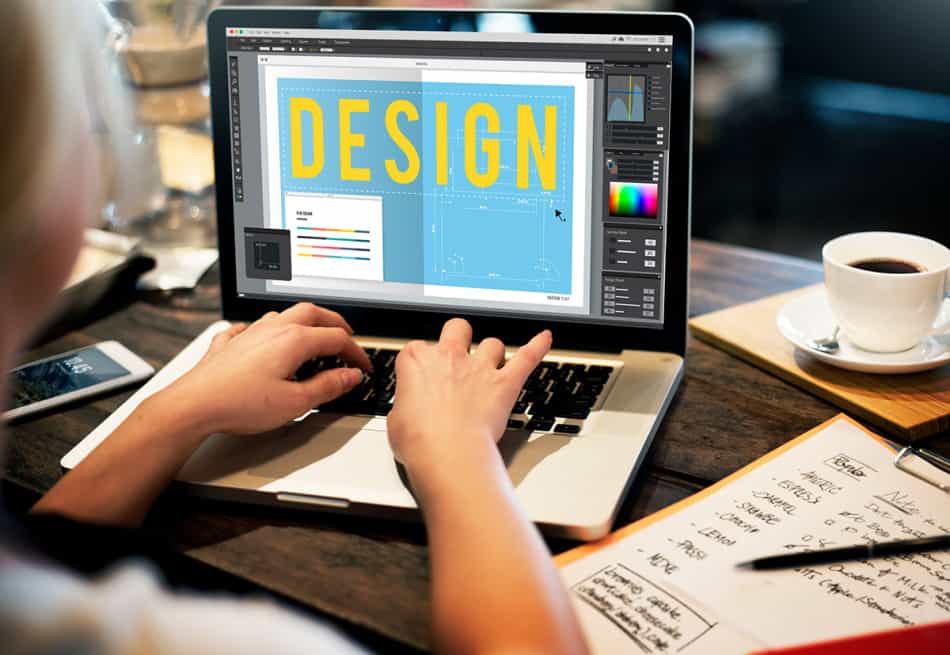If you have ever dealt with disappointment from a mechanic, then you’ll most likely understand the need to know how to fix cars yourself. Imagine waking up very late for work on a Monday morning and finding out that one of your tires is flat. The good thing is that anybody can learn the basics of fixing a car regardless of their skill.
Here’s how to teach yourself to fix cars if you are a beginner:
- Learn basic car parts.
- Figure out the essential repair tools.
- Ask when to replace worn-out parts.
- Draft a maintenance routine for the car.
- Know the common car problems you can fix yourself.
Since you’ve taken a bold step in learning how to teach yourself to fix a car, you’re halfway done. When you begin to get more familiar with your vehicle, it becomes easier to detect changes that occur in its functioning early. Let’s get started.
1. Learn Basic Car Parts
The automobile has different units combined to form one piece. The car consists of various units that help it function well. Statistics showed that a car comprises 30,000 individual parts and these parts depend on each other. Once you learn the basic car parts, and you can identify them by sight, you’ll be able to know what is wrong with your car.
Here are the basic car parts:
- Engine: The engine is the core of the car, and is referred to as the heart of a car because of its functions. How well the car functions depends on the engine because the engine releases power to run.
- Battery: The battery is one of the critical components of the car that kick starts your vehicle. Without the battery, the car would not start, and it is imperative to make sure the battery is in good condition.
- Alternator: The alternator is one of the functional parts of a car that generates power for components that need electrical power in the vehicle. It can charge the battery while in motion and supply power to parts of the car such as the brake lights, trafficking lights, headlights, and radio. A car can still run if the alternator is bad, but it uses power stored inside the battery for a short period.
- Radiator: The radiator’s function is to cool down the heat generated from the car operations. Due to friction, metals in the car glide and grind against each other, and this causes heat generation. The radiator is mostly seen at the front of the compartment of the engine.
- The brake system: The brake is a device used to stop or inhibit the motion of a car. It is used in several situations such as traffic, parking, stopping at railroad crossings, and many others. It is one of the safety features of any car.
- Transmission: This includes the gear system of the car and consists of different gears that control the speed of the vehicle. There are about six gears in a manual car and automatic cars, 3-4 gears unless you have a 6 or 8-speed automatic transmission.
- Shock absorber: This is located at the rear end of the car, making the car stable even when on bad roads. It also makes driving enjoyable because you won’t feel bumps on the road as you go. The shock absorber is there to cushion the effect of road bumps.
- The Silencer: The silencer is a chamber of metal frames that silence every noise produced by the car engine.
- Fuel tank: This is the storage facility for gas or diesel in the car, which helps to power the vehicle.
2. Figure Out the Essential Repair Tools
Tools are essential, and they come in handy in teaching yourself how to fix cars. You can’t possibly fix a car with your bare hands or without using any tool.

However, you probably won’t need to get an entire stock of tools just like you see in automobile repair shops. All you need are essential tools and basic knowledge of what to use while fixing your car.
Let’s take a look at the basic tools you’ll need:
- Jack: A jack should always be in your car standby, as it is useful when there is a problem with your tire. In the case of a flat tire, you will need the jack to lift the car so that you can start changing the tire to a properly gauged one.
- Screwdriver: This tool is very useful for many purposes, and it comes in different types of shapes at the tip. The tips are used to unscrew different kinds of screws, which is why it is better to get a set of them to have a wide range of options from which you can choose. It can come in handy when trying to loosen screws or tighten them.
- Pliers: Pliers come in sizes as well, and their primary purpose is to cut wires or cables whenever you need to work in your car.
- Lubricants and cleaners: These are fluids used to lubricate and clean some parts of the car. If you don’t use a lubricant, it can cause a lot more wear and tear in the car. A lubricant is a liquid thicker than water that is used to reduce the friction between gliding metals while cleaners are not as thick as lubricants because they are meant to clean rusts and gunks.
- Wrenches: Having a wrench set is also crucial for fixing your car, and it adds value to your tool kit. It is used to tighten or remove bolts in the car. There might be a loose bolt that needs to be fixed in your car. Check for it and use a wrench of the desired size to tighten it.
- Gloves: Gloves are essential in protecting your hands and keeping your palms from dirt and stain while fixing your car. Latex gloves are comfortable to use and are also disposable. However, these are not necessary if you don’t want to use them.
- Zip ties: Zip ties function as a bundling tool for wires and cables and keep them tidy. Loose wires can cause accidents. They ensure the neatness in the bundling of your cables and wires, preventing them from littering the whole car.
- Dead blow mallet: This comes into use when you have a stuck bolt. When you smack it with this plus heat, it’s going to loosen, and this would reduce the frustration of having to turn using wenches.
- Multimeter: A multimeter is essential in checking for hot wires, which keeps you from guessing whether a wire is hot or not. If you would rather not get hurt from handling a wire, test it first using a multimeter.
- Drip pans: Drip pans will prevent oil from dripping on your garage, causing a mess. You can use cardboard instead if you can not get a drip can.
3. Ask When To Replace Parts
Due to constant car usage, some parts of the vehicle might get damaged and need replacements.
Asking a professional or another knowledgeable person when to replace worn-out parts is one of the ways to teach yourself how to fix cars. It is also essential for a smooth drive.
The following are parts that frequently need to be replaced:
- Brake pads: The brake pads can wear out due to the constant pressing of the brake, so you should replace them every 3 to 6 years, or 30-50,000 miles (48,280.32 to 80,467.2 km). It could be less if the car is used for a heavier purpose, like for commercial purposes. Or, if you constantly ride your brakes down a hill, you may need to replace them sooner.
- Oil and oil filter: This device helps to filter the dirt and rust in the oil. You can replace them every 3 to 6 months. Or, if you don’t drive that often, try getting an oil change once every 6,000-10,000 miles (9, 656.06-16,093.44 km).
- Air filter: This could be replaced every 3 to 4 years if you don’t frequently drive on dusty roads.
- Tires: The tires could be replaced every 1 to 3 years. However, if the tread is worn down past the point where you can stick your finger between the treads, then you should replace them.
- Belts: You should replace your car belts every 3 years, and as often as you see, they wear off.
- Spark plugs: The manufacturer’s recommendation for your car’s model determines how frequently you should replace the spark plugs. However, most manufacturers recommend that you change your spark plugs every 30,000 miles.
- Fuel pump: It may last for the car’s entire life but can be damaged by things like dirt accumulating inside the fuel tank. Driving on a low level of fuel inside the tank can also contribute to the quick damage of the fuel pump.
- Fuses: The fuses can often be replaced due to electrical issues.
- Clutch: Driving aggressively or poor driving can cause the clutch to fail. Usually, it should not fail until a hundred thousand miles have been completed, but it could fail due to driving abnormalities.
- Battery: Can be replaced every 4 to 5 years in cold climate places and less often in hot climates. However, those of us who live in colder climates have been known to keep a battery for up to 10 years or longer, depending on the maintenance and driving habits.
- Headlights: Driving at night frequently can contribute to the damage of the headlight.
4. Draft a Maintenance Routine For the Car
It is easy to forget to check some essential parts of the car at intervals. Therefore, it is necessary to draft a maintenance routine for your vehicle so as not to miss out on these crucial details for the smooth running of your car.

Here’s a rough draft of a maintenance routine you can create for your car:
- Make sure to always check the car’s manual to get acquainted with the parts.
- Check the air filters every 12 months to see if it needs to be replaced. Check your manual for its location if you don’t know and replace the old with the new.
- Check the oil filter if there’s a need.
- Check tires every month. They are essential as a locomotive facility, so they need to be gauged for safe movement. The tires must be adequately inflated to function well.
- Inspect all car fluids, which include the motor oil, clutch fluid, and brake fluid. Check for the level of the car fluids twice a week to be sure if it’s still at its average level or has gone down. In the case of low-level brake fluid, add more fluid to increase efficiency.
- Always inspect the brake action every morning. The brake is a safety measure, so it must be functioning well to avoid brake failure while driving. Drive around your street, testing the effectiveness of the brake at every interval.
- Always remove rust if you notice any on the terminal of the battery.
5. Know the Common Car Problems You Can Fix Yourself
Car problems can range from getting a flat tire to your headlight going out. These are common, and knowing how to fix these problems can go a long way in preventing you from going late to work or missing an important appointment.
Flat Tires
A flat tire can occur due to a puncture from a sharp object, worn-out tire, and over-pumped tire. When this happens, the flat tire can either be repaired or replaced. However, it is better not to rely so much on spare tires.

To repair flat tires, the steps to take include:
- Look for the leak by checking the tire for whatever object might have punctured it. Also, check if there are any holes or gaps on the tire. You can also inflate the tire to listen for any hissing sound.
- Remove the wheel by loosening the lug nuts with a wrench first before jacking up the car with the car jack. Then, you can fully remove the lug nuts and the wheel after the vehicle is jacked up and stable.
- If punctured by an object, carefully remove it and insert a plug into the hole. You can also use a sealant to repair the hole.
- Then, Inflate the tire and reinstall it. With this temporary repair, you can get your car safely to the mechanic for further repair or even a total tire replacement.
To replace a flat tire, make sure to always have an extra tire in your car so that you’ll be able to use it when one of the tires is faulty.
Watch this video to learn how to change flat tires yourself:
Dead Battery
Leaving the headlights on, extreme temperature, or corrosion can result in a weak or dead battery.
Signs that show your battery is weak or dead include dim or absent lights, the radio stops functioning, and the engine might not start. You can use a tester or charger at home to ensure it is not the starter or alternator that’s faulty.
To jump-start your car:
- Park it close to another car, apply their hand brakes and switch their engines off. Then, open the car hoods and clean the faulty battery if there’s corrosion.
- With jumper cables, connect the red clamps to the positive terminals and the black clamps to the negative terminals of the batteries of both cars. Connect the free negative clamp to an unpainted metal part of the car with the faulty battery.
- Start the car’s engine with the functioning battery for a while before starting the vehicle’s engine with the faulty battery. Leave both engines running for some minutes, then disconnect the cables in the reverse order you connected them. Allow your engine to run for some minutes more to allow the battery to recharge.
Watch this video by ChrisFix on how to properly jump-start a car:
Headlight Bulb
Your headlight bulbs can stop working because they are worn out, have a fuse, or have a wiring problem. However, when just one bulb is affected, it is most likely because it has burned out.

You can easily replace headlight bulbs, especially if you have spare ones around.
The headlights of cars differ, so it is essential to check the car’s manual. But generally, you can replace the headlight bulb with these steps:
- Park the car, turn off the engine, and remove the keys from the ignition. Open the car’s hood and locate the rubber boot that’s holding the headlight in place.
- Remove the wires at the light bulb’s base and push down the clip that’s holding the bulb in place. Remove the old bulb and screw in the new bulb while ensuring that oil or dirt doesn’t touch the new bulb as this can make it burn out prematurely.
- Close the car hood and start the car. Now, your headlights should be up and bright.
You can watch this video by O’Reilly Auto Parts to learn how to replace a car headlight bulb:
Conclusion
Teaching yourself to fix cars is very interesting and enjoyable. You get to explore more about your vehicle, know its part, understand its need and maintenance and know what to do when a minor problem arises.
This knowledge would save you a lot of cash and cost because you now know how to handle little things like changing tires and fixing your battery terminals yourself. It’ll also save you time in case you are stuck in an area with your car. You get to fix what is wrong and drive safely back home quickly.






